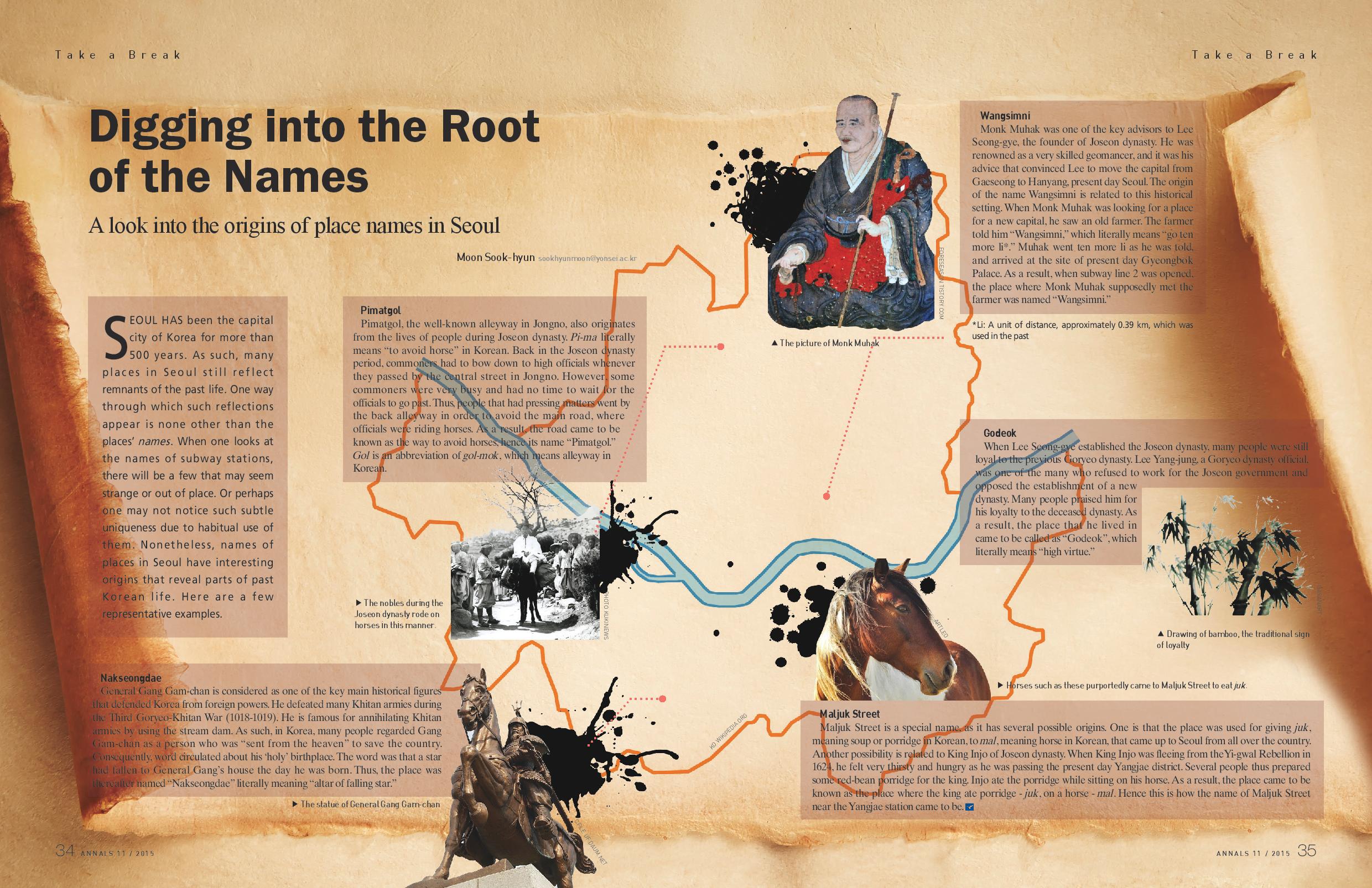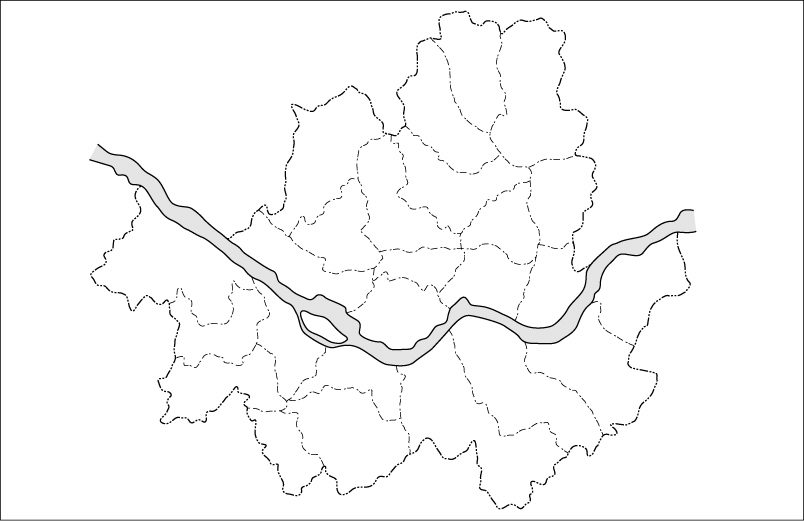A look into the origins of place names in Seoul
 | ||
 | ||
SEOUL HAS been the capital city of Korea for more than 500 years. As such, many places in Seoul still reflect remnants of the past life. One way through which such reflections appear is none other than the places’ names. When one looks at the names of subway stations, there will be a few that may seem strange or out of place. Or perhaps one may not notice such subtle uniqueness due to habitual use of them. Nonetheless, names of places in Seoul have interesting origins that reveal parts of past Korean life. Here are a few representative examples.
Wangsimni
Monk Muhak was one of the key advisors to Lee Seong-gye, the founder of Joseon dynasty. He was renowned as a very skilled geomancer, and it was his advice that convinced Lee to move the capital from Gaeseong to Hanyang, present day Seoul. The origin of the name Wangsimni is related to this historical setting. When Monk Muhak was looking for a place for a new capital, he saw an old farmer. The farmer told him “Wangsimni”, which literally means “go ten more li*.” Muhak went ten more li as he was told, and arrived at the site of present day Gyeongbok Palace. As a result, when subway line 2 was opened, the place where Monk Muhak supposedly met the farmer was named “Wangsimni.”
Maljuk Street
Maljuk Street is a special name, as it has several possible origins. One is that the place was used for giving juk, meaning soup or porridge in Korean, to mal, meaning horse in Korean, that came up to Seoul from all over the country. Another possibility is related to King Injo of Joseon dynasty. When Injo was fleeing from the Yi Gwal Rebellion in 1624, he felt very thirsty and hungry as he was passing the present day Yangjae district. Several people thus prepared some red-bean porridge for the king. Injo ate the porridge while sitting on his horse. As a result, the place came to be known as the place where the king ate porridge (juk) on a horse (mal). Hence this is how the name of Maljuk Street near the Yangjae station came to be.
Pimatgol
Pimatgol, the well-known alleyway in Jongno, also originates from the lives of people during Joseon dynasty. Pi-ma literally means “to avoid horse” in Korean. Back in the Joseon dynasty period, commoners had to bow down to high officials whenever they passed by the central street in Jongno. However, some commoners were very busy and had no time to wait for the officials to go past. Thus, people that had pressing matters went by the back alleyway in order to avoid the main road, where officials were riding horses. As a result, the road came to be known as the way to avoid horses, hence its name “Pimatgol.” Gol is an abbreviation of gol-mok, which means alleyway in Korean.
Godeok
When Lee Seong-gye established the Joseon dynasty, many people were still loyal to the previous Goryeo dynasty. Lee Yang-jung, a Goryeo dynasty official, was one of the many who refused to work for the Joseon government and opposed the establishment of a new dynasty. Many people praised him for his loyalty to the deceased dynasty. As a result, the place that he lived in came to be called as “Godeok”, which literally means “high virtue.”
Nakseongdae
General Gang Gam-chan is considered as one of the key main historical figures that defended Korea from foreign powers. He defeated many Khitan armies during the Third Goryeo-Khitan War (1018-1019). He is famous for annihilating Khitan armies by using the stream dam. As such, in Korea, many people regarded Gang Gam-chan as a person who was “sent from the heaven” to save the country. Consequently, word circulated about his ‘holy’ birthplace. The word was that a star had fallen to General Gang’s house the day he was born. Thus, the place was thereafter named “Nakseongdae” literally meaning “altar of falling star.”
* Li: A unit of distance, approximately 0.39 km, which was used in the past
Moon Sook-hyun
sookhyunmoon@yonsei.ac.kr

